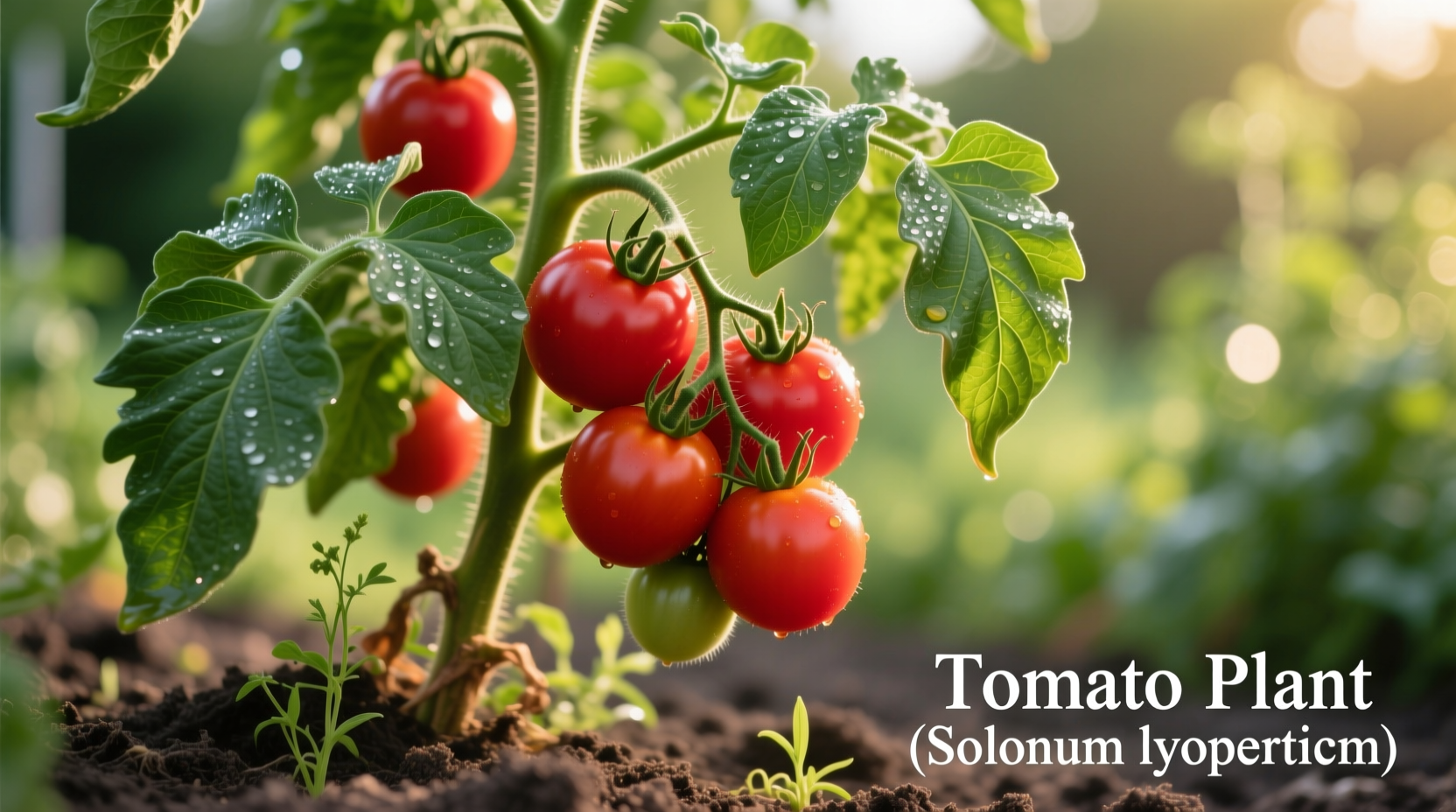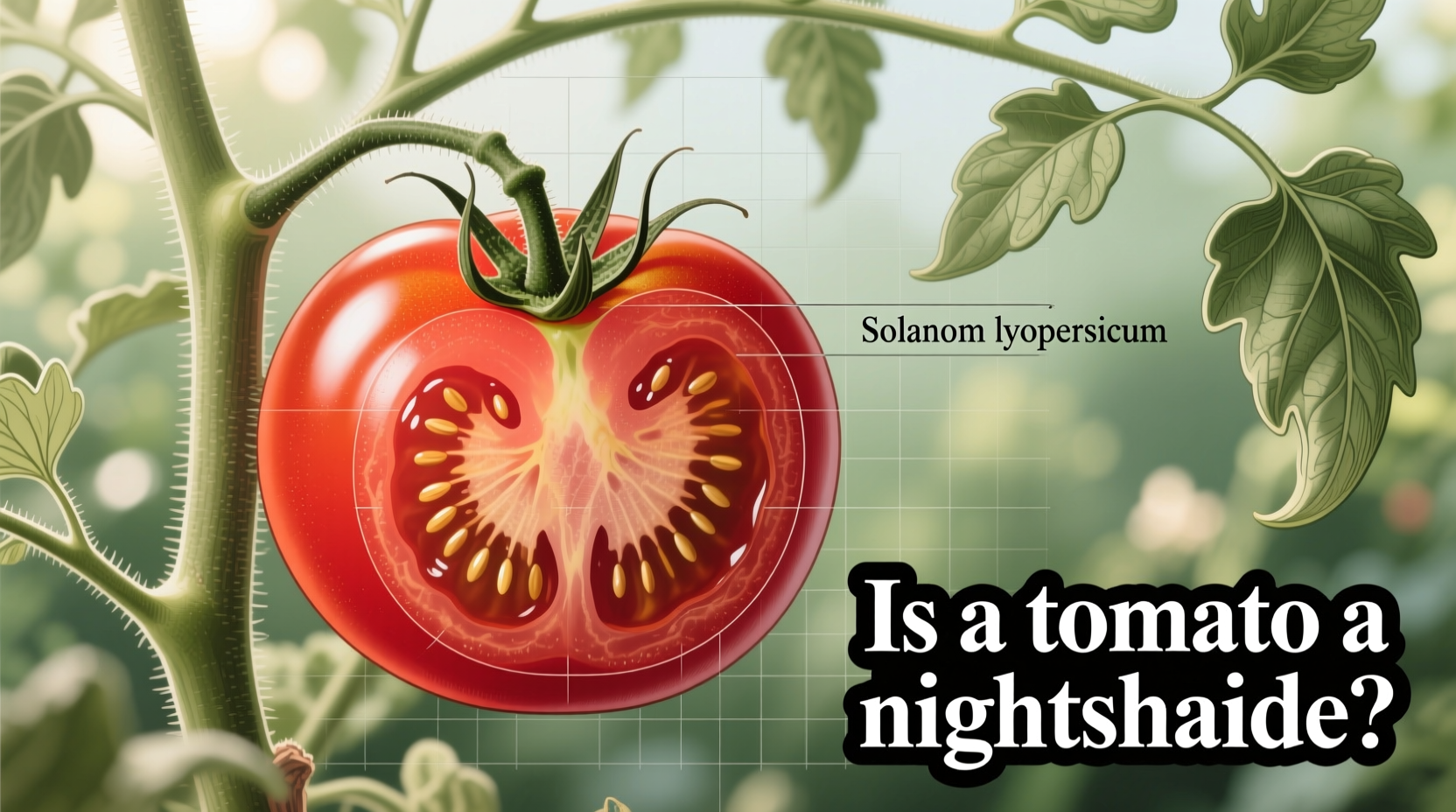Curious about whether tomatoes fit into the controversial nightshade category? You're not alone. Millions of health-conscious eaters and those managing inflammatory conditions search for clarity on this botanical relationship. In this comprehensive guide, you'll discover exactly where tomatoes sit in the plant kingdom, which compounds connect them to other nightshades, and practical guidance for incorporating them safely into your diet.
The Botanical Truth About Tomatoes and Nightshades
Tomatoes (Solanum lycopersicum) unequivocally belong to the Solanaceae family, commonly known as nightshades. This classification isn't merely historical folklore—it's grounded in rigorous botanical science. The Solanaceae family comprises over 2,700 species across 98 genera, with tomatoes sharing key genetic markers and chemical compounds with their nightshade relatives.
When Spanish explorers first brought tomatoes to Europe in the 16th century, suspicion arose because of their resemblance to deadly nightshade (Atropa belladonna). While tomatoes don't contain the same dangerous levels of tropane alkaloids found in belladonna, they do produce different alkaloids that serve as natural pest deterrents.
| Nightshade Plant | Scientific Name | Key Alkaloids Present | Edible Parts |
|---|---|---|---|
| Tomato | Solanum lycopersicum | Tomatine, Dehydrotomatin | Fruit |
| Potato | Solanum tuberosum | Solanine, Chaconine | Tubers (avoid green parts) |
| Eggplant | Solanum melongena | Solasonine, Solamargine | Fruit |
| Peppers | Capsicum spp. | Capsaicin (not technically an alkaloid) | Fruit |
| Goji Berry | Lycium barbarum | Modified alkaloids | Fruit |
Understanding Nightshade Compounds in Tomatoes
The primary alkaloid in tomatoes is tomatine, which concentrates in higher levels in green, unripe tomatoes and plant leaves. According to research published in the Journal of Agricultural and Food Chemistry, tomatine levels decrease significantly as tomatoes ripen, dropping from approximately 500 mg/kg in green tomatoes to just 5-30 mg/kg in fully ripe red tomatoes.
Unlike the more toxic solanine in potatoes, tomatine demonstrates relatively low toxicity to humans. The USDA's Agricultural Research Service confirms that typical dietary exposure to tomatine from ripe tomatoes poses no significant health risk for the general population. In fact, some studies suggest tomatine may have beneficial properties, including potential cholesterol-lowering effects.

When Nightshade Sensitivity Might Matter
While tomatoes are safe for most people, certain individuals may experience issues related to nightshade consumption. Understanding these context boundaries helps separate legitimate concerns from common misconceptions:
- Autoimmune conditions: Some people with rheumatoid arthritis or inflammatory bowel disease report symptom improvement when eliminating nightshades, though clinical evidence remains limited. The Arthritis Foundation acknowledges anecdotal reports but notes insufficient scientific proof of widespread benefit.
- Allergic reactions: True tomato allergies affect approximately 0.6% of the population, according to data from the American College of Allergy, Asthma, and Immunology. Symptoms typically include itching, hives, or digestive upset shortly after consumption.
- Solanine sensitivity: While tomatoes contain tomatine rather than solanine, individuals with extreme sensitivity to nightshade alkaloids might experience joint discomfort. This remains poorly documented in medical literature.
Practical Guidance for Nightshade Consumption
If you're concerned about nightshades but don't want to eliminate nutritious foods unnecessarily, consider these evidence-based strategies:
- Ripeness matters: Choose fully ripe, red tomatoes which contain significantly lower alkaloid levels than green or partially ripe varieties.
- Preparation techniques: Cooking tomatoes actually increases lycopene availability while reducing alkaloid content. A study from the University of California found that baking tomatoes at 350°F for 30 minutes reduced tomatine levels by approximately 15%.
- Rotation approach: Instead of complete elimination, try rotating nightshade vegetables with non-nightshade alternatives (like sweet potatoes instead of regular potatoes) to assess personal tolerance.
- Monitor symptoms: Keep a detailed food journal for 4-6 weeks if exploring potential sensitivities. Note any changes in joint pain, digestive issues, or skin conditions.
Nightshade Myths vs. Scientific Reality
The internet abounds with misinformation about nightshades. Let's clarify some common misconceptions with science-backed facts:
- Myth: All nightshades are poisonous
Fact: While some nightshade family members are toxic (like belladonna), many common foods in this family are perfectly safe and nutritious when prepared properly. - Myth: Nightshades cause arthritis
Fact: The Arthritis Foundation states there's no conclusive evidence linking nightshades to arthritis development. Some individuals may experience symptom exacerbation, but this isn't universal. - Myth: Organic tomatoes don't contain alkaloids
Fact: All tomatoes produce tomatine as a natural defense mechanism, regardless of growing method. Organic farming doesn't eliminate this natural plant compound.
Expanding Your Culinary Horizons Beyond Nightshade Concerns
Whether you're managing a specific sensitivity or simply curious about plant classifications, understanding the nightshade family helps make informed dietary choices. Remember that tomatoes offer exceptional nutritional benefits—rich in lycopene, vitamin C, and potassium—that contribute to heart health and antioxidant protection.
For those needing to limit nightshades, explore delicious alternatives like carrots, beets, and zucchini which provide similar textures and culinary versatility without the nightshade connection. The key is maintaining dietary diversity while respecting individual health needs.











 浙公网安备
33010002000092号
浙公网安备
33010002000092号 浙B2-20120091-4
浙B2-20120091-4